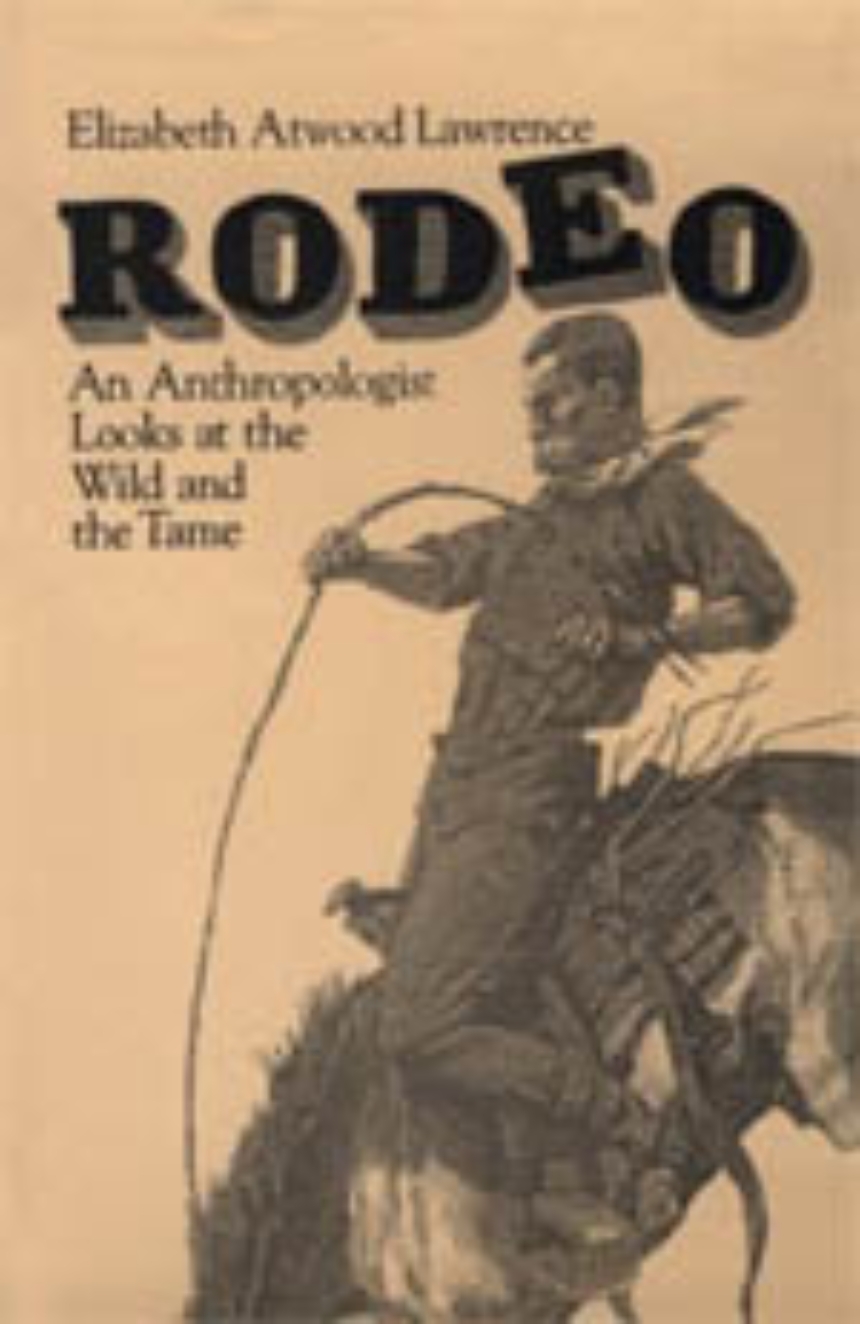Rodeo
An Anthropologist Looks at the Wild and the Tame
Rodeo people call their sport "more a way of life than a way to make a living." Rodeo is, in fact, a rite that not only expresses a way of life but perpetuates it, reaffirming in a ritual contest between man and animal the values of American ranching society. Elizabeth Atwood Lawrence uses an interpretive approach to analyze rodeo as a symbolic pageant that reenacts the "winning of the West" and as a stylized expression of frontier attitudes toward man and nature. Rodeo constestants are the modern counterparts of the rugged and individualistic cowboys, and the ethos they inherited is marked by ambivalence: they admire the wild and the free yet desire to tame and conquer.
Based on extensive field work and drawing on comparative materials from other stock-tending societies, Rodeo is a major contribution to an understanding of the role of performance in society, the culturally constructed view of man’s place in nature, and the structure and meaning of social relationships and their representations.
Based on extensive field work and drawing on comparative materials from other stock-tending societies, Rodeo is a major contribution to an understanding of the role of performance in society, the culturally constructed view of man’s place in nature, and the structure and meaning of social relationships and their representations.
Table of Contents
Preface
Acknowledgments
1. Introduction
2. The Sport of Rodeo
General Description of Rodeo
The Program of Events in Rodeo
3. The Origin and Development of Rodeo
The Performance Aspect: The Wild West Show
The Contest Aspect: The American Working Cowboy
4. Rodeo as the Inheritor of Cowboy
Tradition and its Association with Ranching
5. Man-Horse Relationships in Rodeo
Wild Horses
The Mustangs
The Wild Horse Race of Rodeo
The Broncs of Rodeo
Horses of the Timed Events of Rodeo
Rodeo Horses as Counterparts of Cowboys’ Mounts
The Sacrificial Role of the Horse in Rodeo
Horses in the Special Acts of Rodeo
The Horse in the Bar
6. The Role of Cattle in Rodeo
Calves, Steers, and Cows
Bulls in Rodeo
7. The Role of Other Animals in Rodeo
8. Human Relations with Nature Expressed in Rodeo
The Conquest of Pain and Fear
The Emphasis on Physiological Substances
9. Relations of the Ranch/Rodeo Complex with the Wild
Some Examples from Other Pastoral Cultures
Wild Cats at the Rodeo
The Ranch/Rodeo View of the Wild
Ranch/Rodeo Attitudes toward the Wild
10. Summary
References
Index
Acknowledgments
1. Introduction
2. The Sport of Rodeo
General Description of Rodeo
The Program of Events in Rodeo
3. The Origin and Development of Rodeo
The Performance Aspect: The Wild West Show
The Contest Aspect: The American Working Cowboy
4. Rodeo as the Inheritor of Cowboy
Tradition and its Association with Ranching
5. Man-Horse Relationships in Rodeo
Wild Horses
The Mustangs
The Wild Horse Race of Rodeo
The Broncs of Rodeo
Horses of the Timed Events of Rodeo
Rodeo Horses as Counterparts of Cowboys’ Mounts
The Sacrificial Role of the Horse in Rodeo
Horses in the Special Acts of Rodeo
The Horse in the Bar
6. The Role of Cattle in Rodeo
Calves, Steers, and Cows
Bulls in Rodeo
7. The Role of Other Animals in Rodeo
8. Human Relations with Nature Expressed in Rodeo
The Conquest of Pain and Fear
The Emphasis on Physiological Substances
9. Relations of the Ranch/Rodeo Complex with the Wild
Some Examples from Other Pastoral Cultures
Wild Cats at the Rodeo
The Ranch/Rodeo View of the Wild
Ranch/Rodeo Attitudes toward the Wild
10. Summary
References
Index
